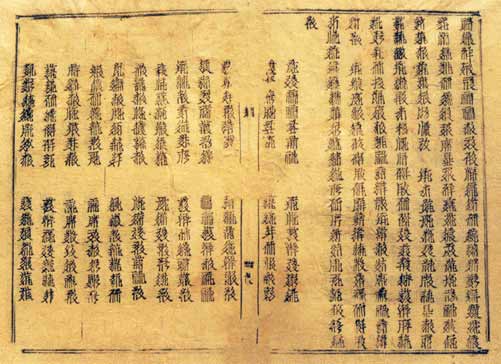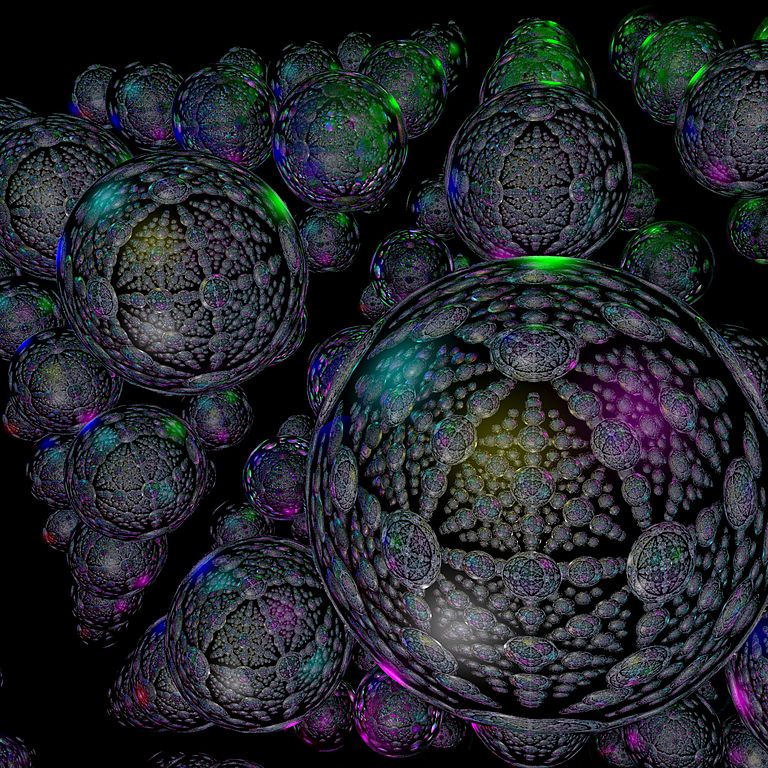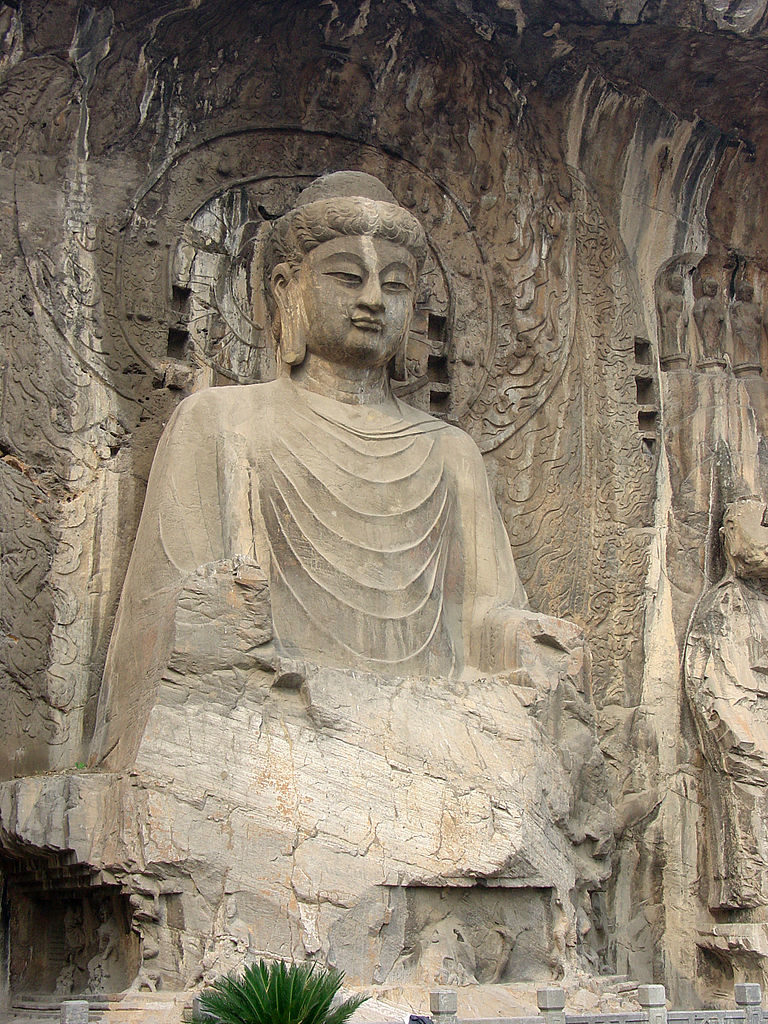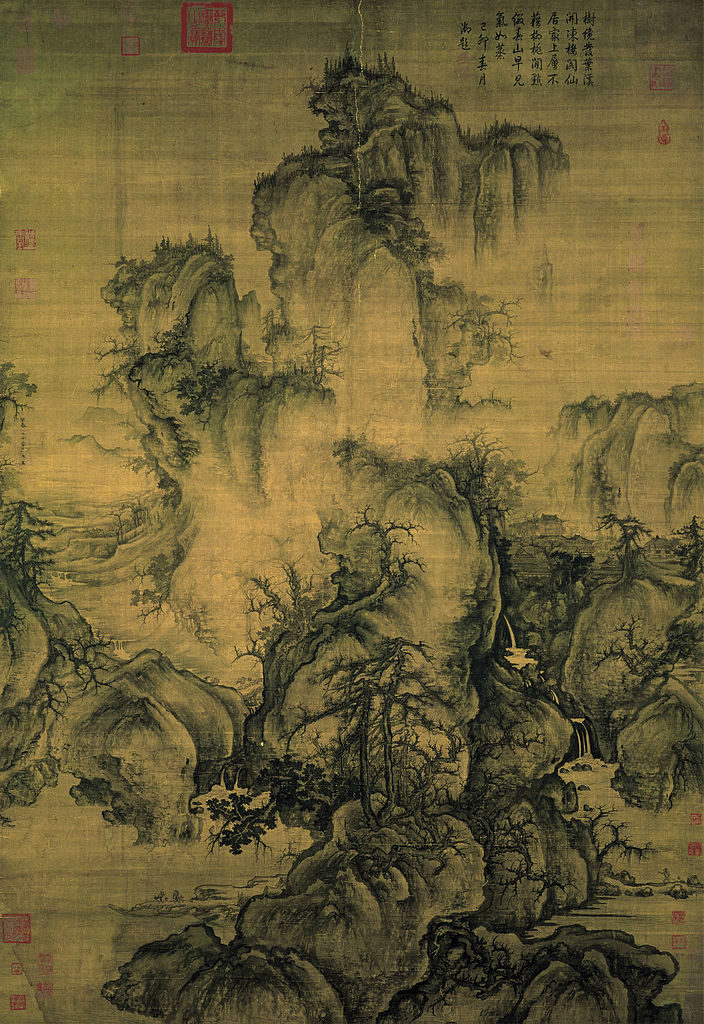Each part of a whole contains the whole
A holographic view of the universe
Francis H. Cook writes that the Chinese Hua-yen (Huayan) school has been regarded by East Asian Buddhist practitioners and scholars as “the high-water mark of Buddhist philosophical effort.” Yet, “next to nothing” had been published about it when he embarked on the study which led to the publication of his Hua-Yen Buddhism, The Jewel Net of Indra in 1977.

The founders of the Hua-yen school regarded the Avatamsaka Sutra as their foundational text. Hua-yen is the Chinese translation of Avatamsaka, meaning “Flower Ornament” or “Flower Garland.” Among these founders, Fa-tsang (Fazang Tang Dynasty – 643-712), the third patriarch of the school, is regarded as the “real creator” of the Hua-yen school, as he was more successful than any of his predecessors in effecting the great syncretising work of [this] school” (Cook). As he did this creatively, Chinese elements came to be integrated in his understanding of Indian Buddhist views, and a distinctly Chinese form of Buddhism came into being with a special focus on a sophisticated elaboration of the doctrine of co-dependent origination (pratitya-samutpada). The original doctrine, going back to the Buddha, was expanded into a holographic worldview of “mutual identity and interpenetration of all phenomena.” Cook describes it more technically as a relationship of “simultaneous mutual identity and mutual intercausality (or interdependence)” among all things in the cosmos.
Because the Hua-yen world-view is complex, it has become customary in Buddhist circles to use the metaphor of Indra’s net to help convey its key insights. The metaphor itself goes back to the Atharva Veda – hence the reference to Indra which may sound strange in a Chinese setting. For the Chinese masters it was only a suitable image, and they took it as such, divested of any teaching it may have been linked to in India.

The world of phenomena is compared to a wonderful net stretched in all directions on which one has “hung a single glittering jewel in each “eye” of the net, , and since the net itself is infinite in dimension, the jewels are infinite in number … If we now arbitrarily select one of these jewels for inspection and look closely at it, we will discover that in its polished surface there are reflected all the other jewels in the net, infinite in number. Not only that, but each of the jewels reflected in this one jewel is also reflection all the other jewels, so that there is an infinite reflecting process occurring” (Cook). Thomas P. Kasulis (referring to Kegon, the Japanese name for Hua-yen), notes that, for us, DNA may provide an even better image of this structure which has no centre: “every part of the whole reflects the pattern of the whole, much like the DNA in every cell of my body contains the blueprint for all the cells of my body.”
From the Buddha’s co-dependent origination to Hua-yen’s mutual identity and interpenetration of all phenomena
As noted in the text about co-dependent origination in Theravada, the traditional formula was “this is, because that is. This is not, because that is not. This ceases to be, because that ceases to be.” This first assertion of interdependence between all dharmas (things) appears to have been worked out in the context of the process of serial causation whereby the erroneous perception of things as independently existing substances led to attachment, which in turn led to suffering, rebirth, and so on. The Noble Eightfold Path had been designed as the practice which would reverse the causation process, and put an end to the cycle of rebirths. In that context, co-dependent origination had an obvious soteriological flavour.

With Nagarjuna’s statement that “It is dependent origination that we call emptiness. It is a dependent designation and is itself the Middle Path,” co-dependent origination moved centre stage as equating both the concept of emptiness, and that of the Middle Way. Now explicitly extended to all things, co-dependent origination acquired an epistemological dimension as it warned against the “cognitive default” which mistakenly superimposed svabhava – independent substantial existence – on our experience of the world. In addition, it was used to fight off a common misunderstanding about the doctrine of emptiness. Nagarjuna was keen to emphasise that asserting that things lacked independent existence did not mean that they did not exist at all. Nagarjuna argued that things did exist, but they did not exist as they appeared to us in our everyday consciousness: the way we saw them was dependent on the way our consciousness operates. To consciousness, otherwise known as reflective consciousness, things arise as pairs of opposites, with each opposite indirectly including the other – for instance, birth and death arise in our minds co-dependently, including as well as opposing each other. Exclusive attachment to, in this instance, life, which would imply a rejection of death, makes no sense. It would be like wishing to only have “light,” and never “darkness,” or only “large” and never “small.” With Nagarjuna, the view of all things as co-dependent with our mind had undoutedly expanded the scope of the doctrine. A close study of the processes of consciousness by the Madhyamika and the Yogacara added an epistemological dimension. The orientation of the Tathagatagarbha, with its focus on the notion of an innate Buddhahood potential within us, for us to cultivate or to discover, however, was primarily soteriological. Keen to remain loyal to the Buddha who had refused to speak about anything “cosmological,” i.e., metaphysical or ontological, none of the Indian Mahayana schools can be said to have ventured beyond a negative – apophatic – saying what emptiness is not, and no more than that.
When Hua-yen claims that each thing, like the diamond in Indra’s net (or every sample of DNA extracted from our body) contains the whole, it obviously goes further. It goes beyond the mere co-arising of things as opposites as we try to get a grip on the world. To the opposition/inclusion of two things, another dimension has been added – that of the co-arising of each thing with the whole, as well as with each other. By introducing the whole in the system, Hua-yen moved from both soteriology and epistemology into what we can only call “ontology” (or “me-ontology,” since emptiness has replaced the “being” it refers to in the Greek understanding of ontology). Modern East Asian philosophers in fact use the word “ontology” in the totalistic sense of “the whole.” Indian Buddhists had been fearful of venturing into assertions about the whole, because of the risk of appearing to see emptiness as another form of Brahman. The Chinese had no such concern.
Each part of a whole contains the whole

We have no problem accepting that each one of our cells includes our DNA, that is, the blueprint for all the cells in our body, because it now seems natural to us that, since as embryos we begin our uterine life with just two cells, some sort of code inscribed in these cells must have guided the making of who we have become. But it may not so easy to understand how each thing in the cosmos contains the whole.
Quite a few examples have been used to convey this complex concept. Without referring to DNA, Cook also gives the example of the body which we readily see as an “organism” where all the parts actively combine their energies to ensure our survival and our well-being. It is clear that all the parts making up our bodies are different from each other – the eye sees, the ear hears, the legs walk. At the same time these parts are as if “programmed” to act in concert to “cause” my body’s existence. Each part, then, is related to the whole and can be said to “cause” the whole to exist. We may, however, fail to notice that these parts could not exist outside the body – the eye cannot see when taken out of the body, neither can the ear hear, or the legs walk. So, it can also be said that the whole “causes” each of its parts to exist. As parts (or organs) of the body, all parts are identical – they have “mutual identity.” As parts cause the whole to exist at the same time as they are being caused by the whole, we have “mutual interpretation.” Hence the description of the Hua-yen system as the “simultaneous mutual identity and mutual intercausality (or interdependence).” Cook notes that, because Fa-tsang wished to set his re-interpretation within the long history of the Buddhist concept of causality in India, he insisted on using the word “cause,” which sounds a bit odd to us. We would rather say that the parts of our body allow the body to “function” and that, reciprocally, the body allows all of its parts to function. In fact, traditional Chinese medicine speaks in terms of “functions” rather than “organs” in the sense of pieces of flesh we can see on an X-ray, and Westerners are often surprised to see that what the Chinese identify as a particular function covers two or more organs which Western medicine regard as completely unrelated. Cook writes: “Identity can be thought of as the static relationship among things, while interdependence is the dynamic relationship; they are two sides of the same coin, and both are alternate ways of saying that all is empty.”
When looking at, for instance, the identity of the nose and the left elbow, Cook explains that it “consists in their identity as conditions for the whole. Therefore, while the two are different, they are the same; in fact, they are identical precisely because they are different. Seen in this light, then, when the nose is understood for what it is, the whole body is known; when we know the nature of the body, we know what the nose is.” The knowledge of the nose contains the knowledge of the body, or, in shorthand, “the nose contains the body.”
To be sure, even Western medical science has a dynamic understanding of the interconnectedness of our body functions even if it still focuses primarily on organs when it comes to treatment. Now, how does the concept of “mutual identity and interpenetration of all phenomena” operate in the relationship between the parts and the whole when the whole is not a living entity? B. Allan Wallace gives the example of a pair of eyeglasses in one of his online lectures on Hua-yen. Take this pair of eyeglasses, disassemble it into its parts – the frame, the lenses, the hinges, the temples, the ear pieces, and lay them on the table, do you still have eyeglasses? You definitely cannot put them on to read the text in front of you. You only have parts of a pair of eyeglasses. To have glasses that enable you to see, the parts need to be re-assembled, and “function” as glasses. On the other hand, each part has been designed in order to be used as part of a pair of glasses, and in that sense, includes the whole glasses.
In the Hua-yen universe, everything counts
Along with this notion that each part contains the whole, we find a re-evaluation of all things, in particular those things that we often dismiss as of little worth, such as a shingle in a barn. Cook writes: “In the “Great Barn,” every rafter, shingle, and nail is important, for where can we find a barn apart from these things? This apparently insignificant shingle I see there in the building is a necessary condition for the barn, and in fact, it is the barn.” The same applies to the negative aspects of life, which we would rather do without. In a universe seen as an “organic body of interacting parts, it is an act of self-defeating madness to insist on a never-ending diet of vintage champagne, sunshine, and laughter, and to insist vehemently and with no small amount of hubris that urine, darkness, and tears be banished forever. In every contest, there has to be a winner and a loser … and all that Hua-yen asks is that we realize, and appreciate, the fact that we cannot ever have one without the other … the two always go together” (Cook).

Unlike the Western worldview based on being – whether it is that of Judaeo-Christian monotheistic religions positing God as the highest Being, the animals, plants and rocks of nature at the lowest rung of being, with humans somewhere mid-way beyond the two, carrying God’s mission to help themselves with anything regarded as below them in the ontological hierarchy, the Hua-yen universe “has no hierarchy. There is no center, or, perhaps if there is one, it is everywhere. Man certainly is not the center, nor is some god.” In a universe where each part contains the whole – that is, each phenomena contains the noumenon – “what is there which is not valuable?” In such a universe, everything counts.”
A full millennium ago, in 7th century China, Fa-tsang had elaborated a totalistic system of intercausality comparable to that of the eco-systems where animal and vegetal life-forms are interconnected in such a way that, should humans, in their ignorance, remove any particular species, the whole ecosystem could collapse. Even apparently insignificant insects or birds may hold the key to our ultimate survival. Cook was well aware of the relevance of Hua-yen to the then nascent concept of ecology, and it may have been what motivated him to spend years in its study.
Sources
Francis H. Cook – Hua-yen Buddhism – The Jewel Net of Indra (1977)
Thomas P. Kasulis – Engaging Japanese Philosophy, A short history (2018)
